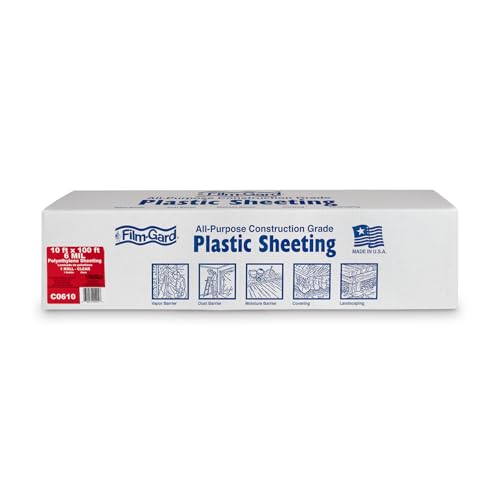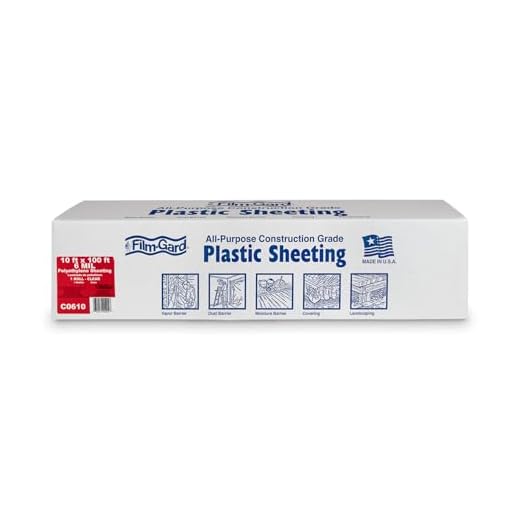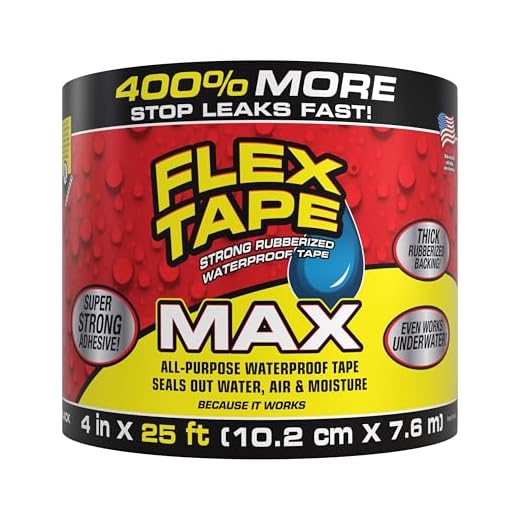Blog
How To Pretreat A House For Pressure Washing

Pressure washing is a great way to clean the exterior of your home and remove dirt, grime, and mildew. However, before you start blasting away with the high-pressure water, it’s important to take some time to pretreat your house to ensure you get the best results.
One of the first steps in pretreating your house for pressure washing is to remove any loose debris. This can include things like leaves, sticks, and other debris that may be stuck to the surface of your home. Use a broom or leaf blower to sweep away as much of this debris as possible, paying special attention to areas around windows, doors, and gutters.
Next, it’s important to inspect your home for any areas with mold or mildew. These can be common problems, especially in areas with high humidity or where water tends to collect. Use a mixture of water and bleach to scrub away any mold or mildew, and be sure to wear protective gloves and eyewear while doing so. This will help prevent the spread of mold spores and ensure a clean surface for pressure washing.
Once you’ve removed any loose debris and treated any mold or mildew, it’s time to pretreat the surface of your house with a cleaning solution. There are many commercial cleaning solutions available specifically for pressure washing, or you can make your own using a mixture of detergent and water. Apply the cleaning solution to the surface of your home using a sprayer or sponge, and let it sit for a few minutes to allow the solution to penetrate and loosen any stubborn dirt or stains.
In conclusion, pretreating a house before pressure washing is an important step in achieving the best results. By removing loose debris, treating mold or mildew, and applying a cleaning solution, you’ll be able to clean your home more effectively and efficiently. So take the time to pretreat your house before pressure washing, and enjoy a sparkling clean exterior that will make your home look as good as new.
How To Prepare Your Home for Pressure Washing
Prior to starting the pressure washing process, it is essential to properly prepare your home. Taking the time to complete these steps will ensure the best possible results and protect your property.
Step 1: Clear the Area
Before pressure washing, it is important to remove any items that may be in the way. This includes furniture, outdoor decorations, and any other objects that could be damaged by the force of the water. Clearing the area will also make it easier to access all surfaces that need to be washed.
Step 2: Trim Vegetation
Trimming vegetation such as bushes, trees, and plants that are close to the house is important before pressure washing. This will prevent any damage to the foliage and ensure that it does not interfere with the pressure washing process. It is also recommended to cover delicate plants with a tarp or plastic sheeting to protect them during the cleaning.
Step 3: Pre-Wet and Protect
Prior to pressure washing, it is beneficial to pre-wet the surfaces to be cleaned. This helps to loosen dirt and grime, making it easier to remove during the pressure washing process. Additionally, it is important to protect any delicate surfaces or areas that should not be subjected to high-pressure water, such as windows, electrical outlets, and outdoor lights. Covering them with plastic or taping them off will prevent any damage.
Step 4: Use the Right Solution
Depending on the type of surface you are cleaning, it may be necessary to use a cleaning solution in addition to the pressure washer water. Using the right solution will help to remove stubborn stains and dirt. It is important to follow the manufacturer’s instructions when using any type of cleaning solution and to test it in an inconspicuous area before applying it to the entire surface.
Step 5: Safety First
Before starting the pressure washer, it is crucial to wear appropriate safety gear, such as goggles, gloves, and closed-toe shoes. High-pressure water can cause injury, and it is important to take precautions to protect yourself. Additionally, it is important to read and follow all safety instructions provided by the pressure washer manufacturer.
By following these steps, you can ensure that your home is properly prepared for pressure washing. Taking the time to prepare will help to protect your property, achieve the best results, and prevent any unnecessary damage.
The Importance of Pretreating a House
Pretreating a house before pressure washing is an essential step to ensure a thorough and effective cleaning process. By pretreating the surfaces, you can remove dirt, grime, and even mold from the exterior of your house, leaving it looking fresh and rejuvenated.
Why is pretreatment necessary?
Pretreatment helps to loosen and break down the accumulated dirt and debris on the surfaces. Without pretreatment, pressure washing alone may not be able to remove stubborn stains or deeply embedded dirt. The pretreatment solution works to soften the dirt, making it easier to wash away during the actual pressure washing process.
Furthermore, pretreatment can help to kill any mold or mildew that may be present on your house’s exterior. Mold and mildew can not only be unsightly but also pose a health risk to you and your family. Using a pretreatment solution specifically designed to combat mold and mildew can effectively remove these harmful substances and prevent their regrowth.
What pretreatment solutions should be used?
There are various types of pretreatment solutions available on the market, each formulated for different cleaning purposes. It is important to choose a solution that is suitable for the specific surfaces of your house. For example, a pretreatment solution designed for brick may not be suitable for vinyl siding.
Before applying any pretreatment solution, it is recommended to test it on a small, inconspicuous area of your house to ensure compatibility and prevent any potential damage. Solutions that are environmentally friendly and biodegradable are always a good choice.
It is important to follow the instructions provided on the pretreatment solution, including the recommended dilution ratios and contact time. Applying the solution evenly and allowing it to penetrate the surfaces for the recommended amount of time will maximize its effectiveness.
| Benefits of pretreatment |
|---|
| 1. Removes stubborn stains |
| 2. Eliminates mold and mildew |
| 3. Ensures a thorough cleaning |
| 4. Prevents damage to surfaces |
In conclusion, pretreating a house before pressure washing is crucial for achieving optimal cleaning results. It helps to loosen dirt, remove stains, kill mold and mildew, and ensure a thorough and effective cleaning process. By using the appropriate pretreatment solutions and following the instructions carefully, you can enhance the overall appearance of your house and maintain its longevity.
Clearing the Area
Before you begin pressure washing your house, it is important to clear the area to ensure safety and efficiency. Follow these steps to prepare your work area:
1. Remove any obstacles
Take a walk around the house and remove any obstacles that may be in your way. This includes outdoor furniture, potted plants, and children’s toys. By clearing the area, you will have more space to move around and work without any potential hazards.
2. Cover delicate plants and objects
If you have delicate plants or objects near the house that cannot be moved, take the time to cover them with a tarp or plastic sheeting. This will protect them from any potential damage due to the pressure washing process. Be sure to secure the covering tightly to prevent it from blowing away.
3. Close and seal windows and doors
Ensure all windows and doors are closed and securely sealed before starting the pressure washing. This will prevent water from entering the house and causing damage. It is also important to close any vents or openings to avoid water from seeping into the interior.
4. Disconnect or cover electrical outlets
Before starting the pressure washer, ensure that all electrical outlets near the work area are disconnected or covered with waterproof covers. This will prevent any accidents or damage that may occur from water contact with electrical sources.
By taking the time to clear the area before pressure washing your house, you can ensure a safe and effective cleaning process. Remember to always follow safety guidelines and manufacturer’s instructions when operating a pressure washer.
Protecting Vulnerable Areas
When pressure washing a house, it is important to protect vulnerable areas from potential damage. This includes fragile surfaces, such as windows, doors, and delicate plants, as well as areas that are susceptible to water infiltration, such as electrical outlets and vents. Here are some steps you can take to protect these areas:
Covering Windows and Doors
Prior to pressure washing, it is advisable to cover windows and doors with plastic sheets or tarps. This will prevent water from seeping through and potentially causing damage to the interior of the house. It is important to secure the covers tightly and make sure they are not loose or flapping in the wind.
Shielding Delicate Plants
If there are delicate plants or flowers near the house, it is crucial to shield them from the forceful water spray. You can use plastic tarps or gardening cloths to cover the plants, ensuring that they are well-protected. It is also a good idea to water the plants before pressure washing, as this will help them absorb less water during the cleaning process.
Additionally, be cautious when pressure washing around shrubs or trees with loose bark, as the high-pressure water can peel away the bark and damage the plants.
Sealing Electrical Outlets and Vents
Electrical outlets and vents are vulnerable to water infiltration during pressure washing. To protect them, it is necessary to seal them with plastic bags or waterproof tape. Make sure the seals are secure and water cannot seep through.
It is important to note that if you are unsure of how to properly protect these areas or if you are concerned about causing damage, it is recommended to consult a professional pressure washing service. They will have the expertise and experience to safely and effectively clean your house while protecting all vulnerable areas.
Removing Dust and Debris
Before pressure washing a house, it is important to remove any dust and debris from the surfaces. This will ensure that the pressure washer is able to clean the surfaces effectively. Here are some steps to follow:
1. Clear the area: Start by removing any outdoor furniture, plants, or decorations from the area that will be pressure washed. This will help prevent any damage to these items and will make it easier to clean the surfaces.
2. Sweep or blow away loose dirt and debris: Use a broom or leaf blower to remove any loose dirt, leaves, or other debris from the surfaces. This will make the pressure washing process more efficient and prevent any dirt from being pushed into the surface.
3. Inspect for mold or mildew: Check the surfaces for any signs of mold or mildew. These can be removed using a mixture of water and bleach. Apply the mixture to the affected areas and let it sit for a few minutes before rinsing it off with water.
4. Cover delicate plants and areas: If there are any delicate plants or areas that should not be pressure washed, cover them with plastic or drop cloths to protect them from the spray.
5. Use a detergent solution: For surfaces that have a lot of dirt or grime, it can be helpful to use a detergent solution before pressure washing. This will help to loosen and remove stubborn stains. Follow the manufacturer’s instructions for the detergent and rinse the surfaces thoroughly after applying it.
6. Let the surfaces dry: After removing the dust and debris, allow the surfaces to dry completely before starting the pressure washing process. This will ensure that the pressure washer is able to clean the surfaces effectively and prevent any damage from occurring.
By following these steps to remove dust and debris before pressure washing, you will be able to achieve the best results and ensure that the surfaces are cleaned thoroughly.
Applying Cleaning Solutions
Once you have properly prepped the house for pressure washing, it’s time to apply the cleaning solutions.
Before applying any cleaning solution, it’s important to read and follow the manufacturer’s instructions. Different cleaning solutions will have different dilution ratios, so make sure to mix the solution according to the recommended measurements.
Start by filling a pressure washer with the cleaning solution. Use a low-pressure nozzle or a soap applicator attachment to apply the solution to the surface of the house. Work in small sections, starting from the bottom and working your way up.
Apply the solution evenly, making sure to cover the entire surface. You can use a brush or a soft bristle broom to scrub any stubborn stains or dirt. Be careful not to use too much pressure, as it can damage the surface of the house.
After applying the cleaning solution, let it sit on the surface for the recommended time specified by the manufacturer. This will give the solution enough time to break down the dirt and grime. Avoid letting the solution dry on the surface.
Once the recommended time has passed, switch the nozzle to a high-pressure setting and rinse off the cleaning solution. Start from the top and work your way down, making sure to remove all traces of the solution. It’s important to rinse thoroughly to prevent any residue from being left behind.
Repeat the process for the rest of the house, working in small sections at a time. Take breaks if needed, especially if you are working on a large surface area.
Remember to always wear protective gear, such as gloves and safety goggles, when working with cleaning solutions. Be cautious and follow safety guidelines to prevent any accidents.
By properly applying cleaning solutions, you can effectively remove dirt, grime, and stains from the surface of your house, leaving it looking clean and refreshed.
Question-answer
What is pressure washing?
Pressure washing is a cleaning method that uses high-pressure water spray to remove dirt, grime, mold, and mildew from surfaces such as buildings, sidewalks, and driveways.
Why is it important to pretreat a house before pressure washing?
Pretreating a house before pressure washing helps to loosen and lift dirt, grime, and stains, making it easier for the pressure washer to remove them during the cleaning process. It also helps to protect the surface from potential damage caused by high-pressure water.
What are some common pretreatment methods for pressure washing a house?
Some common pretreatment methods for pressure washing a house include applying a detergent or cleaning solution to the surface, scrubbing the surface with a brush or broom to agitate the dirt and grime, and letting the cleaning solution sit for a period of time to break down any stubborn stains.
Can I use any type of detergent for pretreating a house before pressure washing?
No, not all detergents are suitable for pretreating a house before pressure washing. It is important to use a detergent that is specifically formulated for use with pressure washers. These detergents are designed to be safe for use on various surfaces and to help lift and remove dirt, grime, and stains effectively.
Are there any safety precautions I should take when pretreating a house for pressure washing?
Yes, there are several safety precautions you should take when pretreating a house for pressure washing. These include wearing protective goggles, gloves, and clothing to protect against any potential splashes or splatters from the cleaning solution, using a ladder or scaffolding system if needed to reach higher areas, and making sure to follow the manufacturer’s instructions for any cleaning products or equipment being used.
Recent Posts
-
How To Connect Soap To Honda Pressure Washer
June 28, 2024 -
A To Z Pressure Washing Scam
June 27, 2024 -
How To Pressure Wash Your Home With A Garden Hose
June 27, 2024 -
Where Can I Buy Honda Pressure Washer Parts
June 25, 2024










